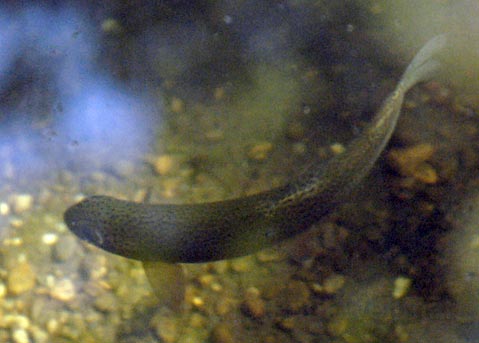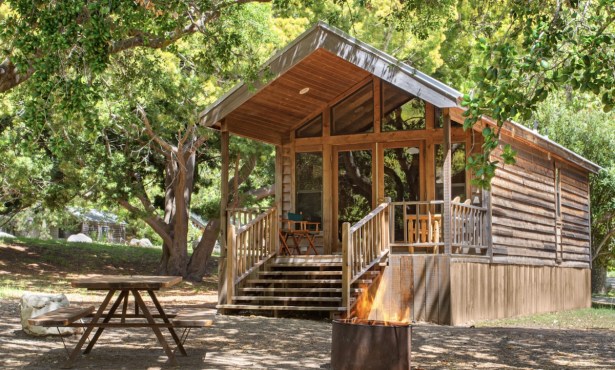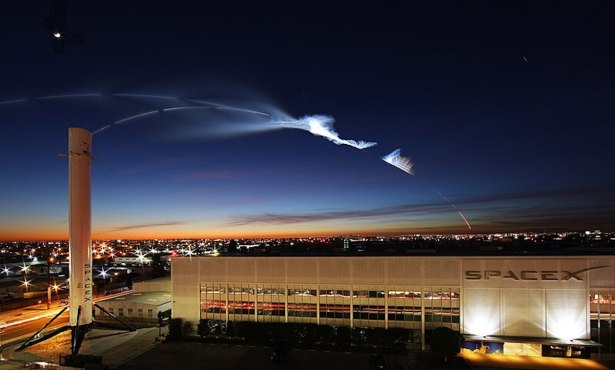Steelhead Trout Recovery Project Bigger Than Ever
Caution: Fish Crossing

The Environmental Defense Center has teamed up with the City of Santa Barbara and the Corps of Engineers to create a larger-than-ever steelhead trout recovery plan for Mission Creek—a critical waterway for the trout’s migration to upstream spawning grounds. The design will be implemented in lower Mission Creek, where two old CalTrans concrete channels and two bridges that impede steelhead migration will be retrofitted into new channels that allow steelhead to once again access their historic spawning grounds.
Santa Barbara’s streams were once teeming with steelhead trout, and in the 1940s the Santa Ynez River was famed for having one the largest population of migrating steelhead in all of Southern California, according to ecologists working on this project. Urban development, channelized streams, dams, and other impediments have made this once abundant species disappear almost entirely from this region. Brian Trautwein, an environmental analyst for the Environmental Defense Center, and founder of the Urban Creeks Council, said, “Steelhead populations in Southern California have dropped by 99 percent after the construction of dams and channels, which have blocked steelhead migration in streams and rivers. However, recent efforts have led to a project of removing and modifying impediments to migrations, and [the steelhead] are expected to come back in greater numbers.”
Steelhead trout are anadromous: They migrate from the ocean back to the inland streams in which they originated to spawn. Eggs are usually deposited in slow-moving streams with loose gravel, where the fry develop quickly. Eventually, some of the trout go through a process called smoltification, which enables them to withstand the harsh and varied conditions of the seawater’s chemistry. Other fry do not go through this process, and stay in freshwater their entire life as rainbow trout. (This dual option actually gives the species an advantage, allowing it to repopulate in case of drought or disaster). In Santa Barbara, much of the gateway streams connecting steelhead trout to deep perennial pools in the mountains have been channelized, obstructed, diverted or converted to agricultural land.
Cameron Benson, from the City of Santa Barbara’s Creeks Division, said, “Steelhead have been observed attempting to migrate up Mission Creek in five of the last seven years. Unfortunately, the fish were not able to reach the upper watershed because of some concrete barriers in the creek. The city and its partners are working to remove those barriers and restore migratory access through Mission Creek for the steelhead.”
Bradbury Dam continues to be a major impediment keeping steelhead trout from migrating in higher reaches of the Santa Ynez River, and it isolates populations of rainbow trout higher in the watershed. Trautwein added, “When Bradbury Dam was built in the 1950s, steelhead populations dropped from 30,000 to less than a hundred. This was mainly due to the fact that the dam blocked access to roughly three quarters of steelhead upland habitat in the Santa Ynez River.”
The EDC and Caltrout have worked for almost 20 years to restore the connection for steelhead on the Santa Ynez River, and the State Water Resources Control Board will decide in the next year whether additional measures are required to conserve this nearly extinct species.
In Santa Barbara, steelhead migrating up Mission Creek confront a similar obstacle at Mission Tunnel, a 3.7-mile tunnel starting at Gibraltar Dam and ending in the foothills on Mission Creek.
The Environmental Defense Center, which has spearheaded many initiatives to protect and restore creeks, is now centering its focus on restoring steelhead migration throughout Mission Creek’s lower, channelized sections. This involves the mile-long CalTrans flood control channel barrier (between Carrillo and Mission Street, beneath the Highway 101 overpass). “From 1988 to 1994, the EDC led a community campaign to stop concrete channelization of the lower 1.2 miles of Mission Creek,” Trautwein said. “This decade we’ll restore passage for migrating steelhead and bring this remarkable and resilient species back from the brink of extinction.”
The EDC has worked extensively with the Army Corp of Engineers and the Santa Barbara Creeks Division to retrofit the design of that old mile-long stretch of concrete channel so that steelhead can swim beyond it into upper reaches of the watershed.
Designed in the 1930s and the 1960s for flood control, the old CalTrans concrete channels created high velocity and low water levels, which do not fit with steelhead preferences. The new design provides various refuge zones and pools for the trout to rest in; the side resting pockets have already been tested in smaller models. This design is also intended to slow water flow enough for steelhead to migrate in, while at the same time minimizing flooding in a storm event. The EDC has already secured a portion of the funding for the project, and if the remainder of the funding is secured through state, federal, or private grants, construction could begin as early as next summer.
The Environmental Defense Center also has launched a Mission Creek Outreach Program that invites the community to participate in creek cleanups and presentations on Mission Creek ecology. For more information call Trautwein at 963-1622 or email him at btraut@edcnet.org.



